There is a lot of satisfaction in watching a master potter spin clay on a wheel, transforming a lump of earth into something beautiful and functional. These old pottery towns have had centuries of practice with the art, learning and refining technique and handing it down from generation to generation like family recipes. Walking along their cobblestone streets, you will hear the quiet hum of pottery wheels and catch glimpses of artisans at work through open workshop doors.
What sets these destinations apart isn’t so much the pottery itself—it’s the entire culture surrounding clay. Included below are 15 historic towns of pottery that allow visitors to see genuine ceramic skills in their native habitat.
Stoke-on-Trent, England

Known as ‘The Potteries,’ Stoke-on-Trent earned its reputation as the world’s pottery capital during the Industrial Revolution. This collection of six towns has been producing ceramics since the 12th century, with famous names like Wedgwood, Royal Doulton, and Spode calling it home.
The distinctive bottle-shaped kilns that once dotted the landscape are now museum pieces, but the tradition lives on in working factories and independent studios. Visitors can tour the World of Wedgwood, try their hand at pottery making, and explore the Potteries Museum to understand how this unassuming English region became synonymous with fine china worldwide.
Jingdezhen, China

For over 1,700 years, Jingdezhen has been China’s porcelain capital, earning the nickname ‘Porcelain Capital of the World.’ The city’s unique kaolin clay deposits and centuries of expertise created the delicate blue and white ceramics that Europeans once called ‘China.’
Today, the ancient kilns still operate alongside modern workshops where artists from around the globe come to learn traditional techniques. Walking through the Creative Market, you’ll find everything from museum-quality reproductions of Ming Dynasty pieces to contemporary interpretations that push ceramic art in new directions.
Like Travel Pug’s content? Follow us on MSN.
Deruta, Italy
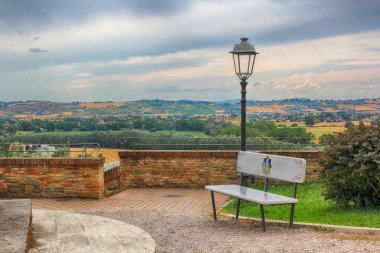
Perched on a hilltop in Umbria, Deruta has been producing maiolica pottery since the 14th century. The town’s distinctive style features bright blues, yellows, and greens painted in intricate patterns that seem to dance across plates, vases, and decorative tiles.
Nearly every building along the main street houses a pottery workshop or showroom, creating an open-air museum of ceramic craftsmanship. The Regional Museum of Ceramics displays pieces dating back six centuries, showing how Deruta’s artisans developed their signature techniques and maintained them through changing times.
Faenza, Italy

The word ‘faience’ comes directly from this Italian town, which has been synonymous with fine ceramics since the Renaissance. Faenza’s pottery tradition reaches back to Roman times, but it flourished during the 15th and 16th centuries when local artisans perfected tin-glazed earthenware techniques.
The International Museum of Ceramics houses one of the world’s most comprehensive collections, including pieces by Picasso and Matisse alongside traditional Italian pottery. Modern workshops continue the tradition, with artisans creating both classical reproductions and contemporary pieces that honor centuries of accumulated knowledge.
Shigaraki, Japan

This quiet mountain town in Shiga Prefecture has been producing pottery for over 1,200 years, making it one of Japan’s oldest ceramic centers. Shigaraki is famous for its earthy, rustic pottery that embraces natural imperfections and celebrates the unpredictable effects of wood-fired kilns.
The town is particularly known for tanuki (raccoon dog) figurines that have become symbols of good luck throughout Japan. Visitors can explore ancient kiln sites, watch master potters work with traditional techniques, and even try their hand at creating pieces using local clay that’s prized for its unique properties.
Like Travel Pug’s content? Follow us on MSN.
Guatil, Costa Rica
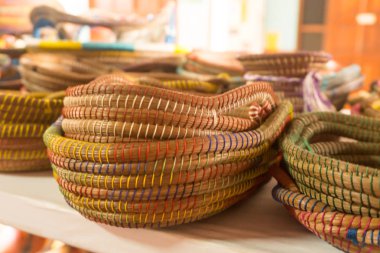
This small village in Costa Rica’s Guanacaste Province has maintained pre-Columbian pottery traditions for over 500 years. The women of Guatil use techniques passed down through generations, hand-forming clay vessels without pottery wheels and firing them in open pits using traditional methods.
Their distinctive red and black pottery features geometric patterns inspired by ancient Chorotega designs. Visiting Guatil offers a rare glimpse into pottery making that predates European influence, where every piece connects directly to indigenous traditions that have survived centuries of change.
Seto, Japan

Located near Nagoya, Seto has been producing ceramics for over 1,000 years and gave its name to all Japanese pottery—’setomono’ literally means ‘things from Seto.’ The town specialized in glazed ceramics during the Kamakura period and became famous for its technical innovations in kiln design and glazing techniques.
Today, Seto produces everything from traditional tea ceremony items to contemporary art pieces, maintaining its reputation for technical excellence. The Seto City Museum showcases the evolution of local pottery styles, while numerous workshops allow visitors to experience the meticulous craftsmanship that made Seto famous.
Vallauris, France
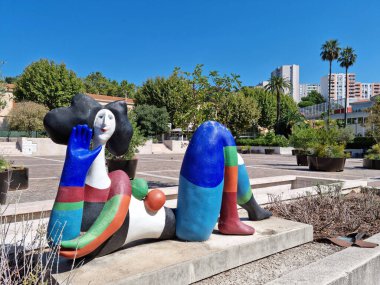
This Côte d’Azur town experienced a pottery renaissance in the 1940s when Pablo Picasso discovered its traditional ceramic workshops and began creating his own pieces there. Vallauris had been producing utilitarian pottery since Roman times, but Picasso’s presence attracted artists from around the world and transformed it into a center for ceramic art.
Today, over 100 pottery workshops line the narrow streets, ranging from traditional Provençal pottery to avant-garde ceramic sculptures. The Picasso Museum displays the master’s ceramic works alongside pieces by other artists who found inspiration in this hillside town.
Like Travel Pug’s content? Follow us on MSN.
Horezu, Romania
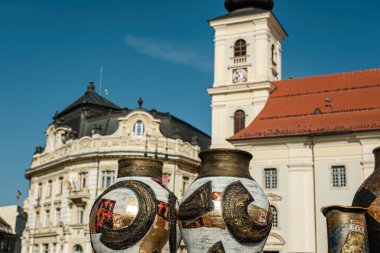
Nestled in the foothills of the Carpathian Mountains, Horezu has maintained its pottery traditions since the 17th century. The town’s distinctive style features intricate hand-painted designs in earth tones, often incorporating roosters, flowers, and geometric patterns that reflect Romanian folk art.
UNESCO recognized Horezu pottery as an Intangible Cultural Heritage, acknowledging both its artistic value and cultural significance. Local artisans still use traditional techniques, from preparing clay by treading it by foot to firing pieces in wood-burning kilns, creating pottery that serves as both functional items and cultural artifacts.
Pueblo of San Ildefonso, New Mexico

This Native American pueblo has been creating pottery for over 700 years, maintaining traditions that predate European contact by centuries. San Ildefonso is particularly famous for black-on-black pottery pioneered by Maria Martinez in the early 20th century, a technique that involves burnishing clay to create contrasting matte and glossy surfaces.
The pottery reflects deep spiritual connections to the land, with designs often representing clouds, rain, and other natural elements essential to pueblo life. Visitors can purchase directly from artisans’ homes and learn about pottery’s role in preserving and expressing Native American culture.
Rye, England

This medieval hilltop town became famous for its distinctive pottery during the 19th century, when the Rye Pottery developed a unique salt-glazed stoneware that captured the coastal town’s maritime character. The pottery’s earthy browns and blues reflect the colors of Rye’s ancient buildings and nearby marshlands.
Today, the Rye Pottery continues producing traditional pieces alongside contemporary designs, maintaining techniques that create the distinctive textures and colors that made Rye ceramics recognizable worldwide. The workshop welcomes visitors to watch artisans at work and try their hand at creating their own pieces.
Like Travel Pug’s content? Follow us on MSN.
Mashiko, Japan

Located about 75 miles north of Tokyo, Mashiko became internationally known through the work of Shoji Hamada, a Living National Treasure who helped establish the Japanese folk craft movement. The town’s pottery tradition emphasizes functional beauty, creating everyday items that bring aesthetic pleasure to daily life.
Mashiko’s twice-yearly pottery fairs transform the entire town into a massive ceramic marketplace, attracting visitors from across Japan and beyond. The relaxed atmosphere and emphasis on accessible, beautiful pottery make Mashiko a perfect introduction to Japanese ceramic culture.
Grottaglie, Italy
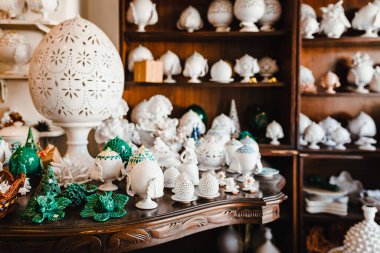
This Puglian town has been producing ceramics since the 15th century, specializing in large decorative pieces and architectural elements. Grottaglie’s pottery district, known as the Quartiere delle Ceramiche, features dozens of workshops where artisans create everything from traditional olive oil jars to contemporary art pieces.
The town’s unique white clay produces ceramics with exceptional durability and a distinctive appearance that sets Grottaglie pottery apart from other Italian ceramic traditions. Many workshops welcome visitors to observe the creation process and purchase pieces directly from the artists who made them.
Bat Trang, Vietnam
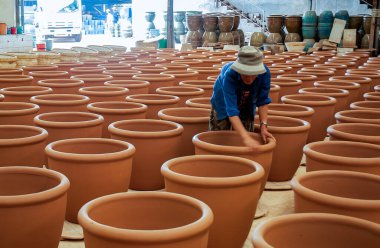
Just outside Hanoi, Bat Trang has been Vietnam’s most important pottery village for over 500 years. The village specializes in both traditional Vietnamese ceramics and pieces influenced by Chinese techniques, creating a unique fusion style. Narrow alleys wind between family workshops where multiple generations work side by side, maintaining techniques passed down through centuries.
The village’s proximity to Hanoi makes it easily accessible for day trips, allowing visitors to experience traditional Vietnamese pottery making and purchase authentic pieces at prices that reflect the village’s role as a working pottery center rather than a tourist destination.
Like Travel Pug’s content? Follow us on MSN.
Avanos, Turkey

Built along the Red River in Cappadocia, Avanos has used the river’s distinctive red clay to create pottery for over 3,000 years. The town’s workshops often occupy caves carved into the soft volcanic rock, creating atmospheric workspaces that seem to emerge from the landscape itself. Local artisans specialize in hair pottery, an unusual technique that incorporates human hair into the clay to create unique textures and patterns.
The combination of ancient techniques, dramatic landscape, and innovative approaches makes Avanos a fascinating destination for anyone interested in how pottery traditions adapt while maintaining their essential character.
Clay Connects Past and Present

These pottery villages illustrate how old-fashioned craft can flourish today when neighborhoods hold on to their heritage and adapt to the times. Each location offers something distinct—either thousand-year-old techniques, native clays, or innovative approaches that take advantage of roots in the past.
Visiting there’s not about buying pottery, it’s about experiencing living traditions where skilled hands continue to shape clay just like their ancestors decades earlier, proving some human activities transcend time and machines.
More from Travel Pug

- 20 Best Beach Towns in the Carolinas
- 13 Destinations Where Tourists Regularly Regret Their Trip
- 20 Destinations That Are More Magical Without an Itinerary
- 20 Underrated Adventures That Belong on Your Travel List
- 20 Cities Where You Should Just Wing It, No Planning Required
Like Travel Pug’s content? Follow us on MSN.w us on MSN.N.
